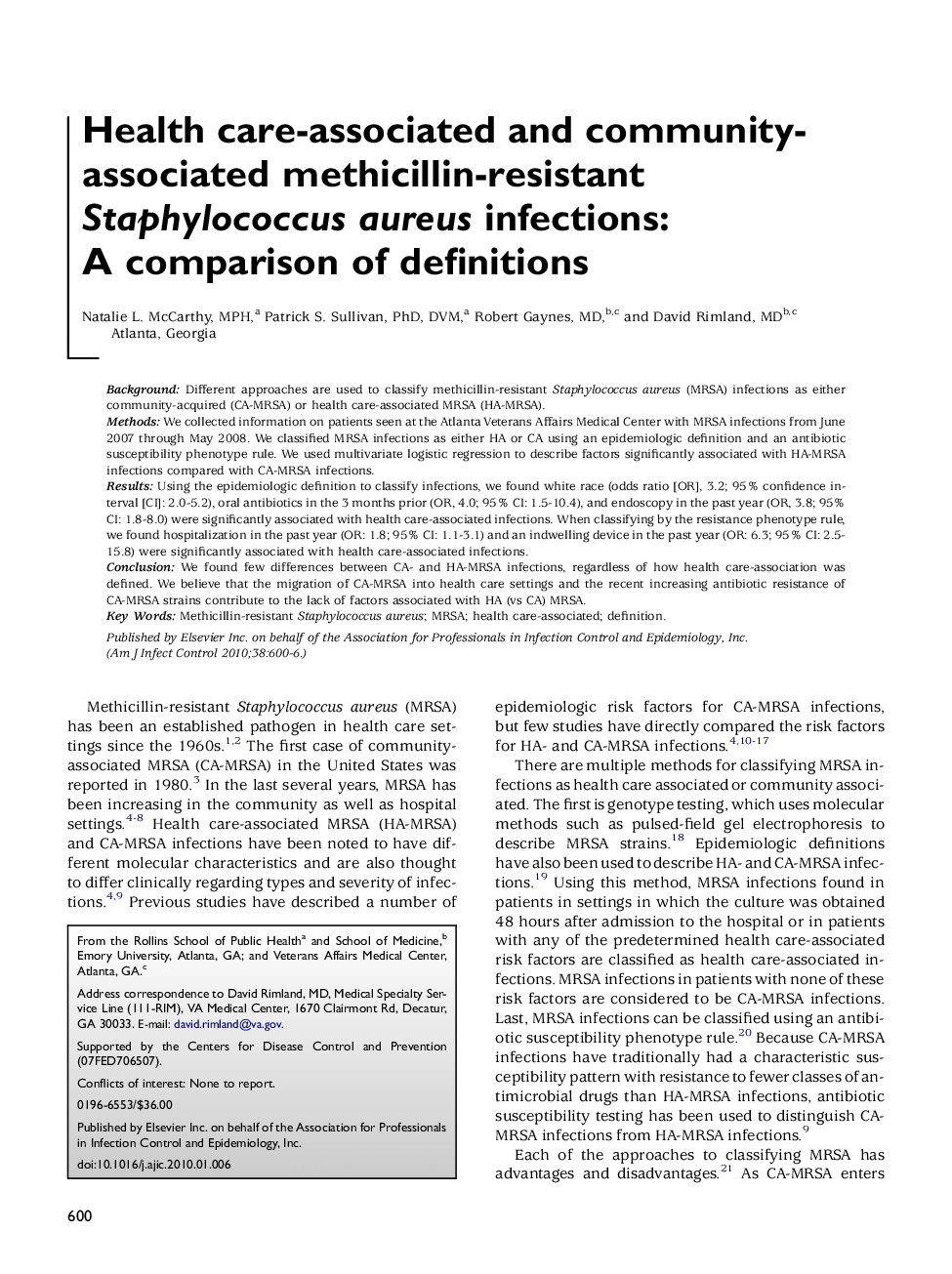| Article ID | Journal | Published Year | Pages | File Type |
|---|---|---|---|---|
| 2638375 | American Journal of Infection Control | 2010 | 7 Pages |
BackgroundDifferent approaches are used to classify methicillin-resistant Staphylococcus aureus (MRSA) infections as either community-acquired (CA-MRSA) or health care-associated MRSA (HA-MRSA).MethodsWe collected information on patients seen at the Atlanta Veterans Affairs Medical Center with MRSA infections from June 2007 through May 2008. We classified MRSA infections as either HA or CA using an epidemiologic definition and an antibiotic susceptibility phenotype rule. We used multivariate logistic regression to describe factors significantly associated with HA-MRSA infections compared with CA-MRSA infections.ResultsUsing the epidemiologic definition to classify infections, we found white race (odds ratio [OR], 3.2; 95% confidence interval [CI]: 2.0-5.2), oral antibiotics in the 3 months prior (OR, 4.0; 95% CI: 1.5-10.4), and endoscopy in the past year (OR, 3.8; 95% CI: 1.8-8.0) were significantly associated with health care-associated infections. When classifying by the resistance phenotype rule, we found hospitalization in the past year (OR: 1.8; 95% CI: 1.1-3.1) and an indwelling device in the past year (OR: 6.3; 95% CI: 2.5-15.8) were significantly associated with health care-associated infections.ConclusionWe found few differences between CA- and HA-MRSA infections, regardless of how health care-association was defined. We believe that the migration of CA-MRSA into health care settings and the recent increasing antibiotic resistance of CA-MRSA strains contribute to the lack of factors associated with HA (vs CA) MRSA.
